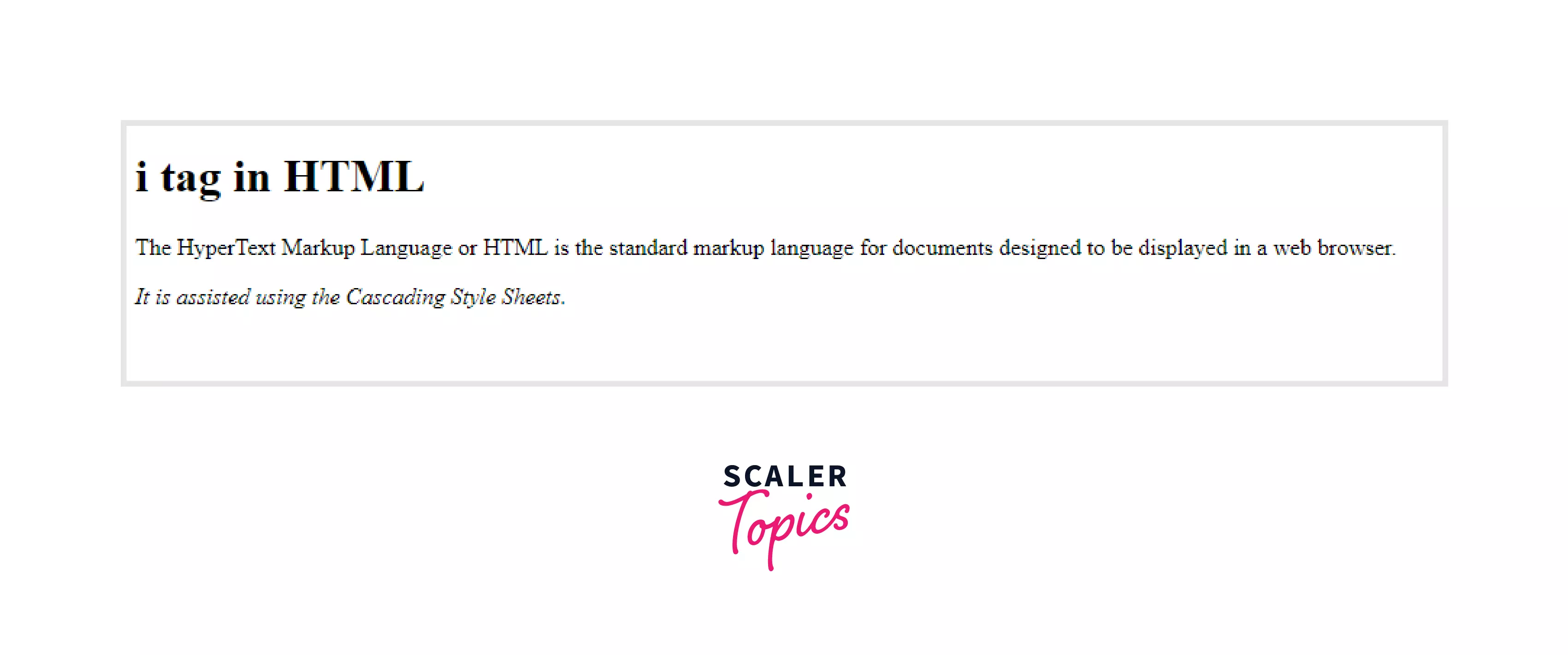<i> Tag in HTML

Overview
The <i> tag in HTML specifies a section of text that is used to display a different tone or subject as compared to the rest of the text, and this specified text is displayed in an italics typeface.
Syntax of <i> Tag in HTML
Syntax:
Default CSS for i Element:
Example:
Output:
<i> Tag Attributes
<i> tag supports all the global and event attributes, some of the important ones are listed below:
Global Attributes:
- class: refers to the class name for styling using CSS,
- id: refers to a unique id for events and styling,
- style: used to add inline-css to the element,
- dir: refers to the direction of the text on the output page, etc.
Event Attributes:
- onload: when the page has finished loading, this method is called.
- onmessage: when a message is triggered, the script will run.
- ononline: when the browser is connected to the internet, then this method is called, etc.
How to Use <i> Tag in HTML?
-
Readability of the visitors of your webpage is very important, and to improve readability, we use the <i> tag in HTML. <i> tag makes a text separated (italicized) from the rest of the text, these separated words/text could be a group that has distinct semantic meanings from the rest of the text, for example:
- A different tone or emotion
- Technical jargon
- Taxonomic nomenclature
- Thoughts (for example, "She thought, Will it rain tomorrow? "), etc.
-
Earlier in HTML standards, the <i> tag was just an element used for showing a specialized text in italics, similar to how the <b> element. <b> tag is used to display text in bold typeface. This is no longer the case, as these tags now specify semantics rather than aesthetics. Although a browser may still display the contents of the <i> element in the italic typeface, it is no longer necessary. Coders should utilize the CSS font-style attribute to display the italicized text.
-
We use <i> tag in HTML when there is no other appropriate semantic element is supported, for example:
- <em>: Emphasized text
- <cite>: Title of a creative work
- <dfn>: Definition of a term
All these above tags also make the specific text in italics typeface.
<i> Tag Examples
1. <i> Tag to Make the Italic Text in HTML.
Output:

2. <i> Tag && <p> Tag to Illustrate the Difference in the Text Appearance While Rendering It.
Output:

3. <i> Element to Mark Text That is in Another Language
Output:

Browser Support
<i> tag in HTML is supported in almost all browsers. Some of them are mentioned below:
- Google Chrome
- Microsoft Edge/IE
- Mozilla Firefox
- Opera
- Safari
Conclusion
- <i> tag in HTML is used to italicize a section of the text.
- As <i> tag is not a semantic tag, so <em>, <cite> or <dfn> tags can be used for italicizing a specific section of the text.
- <i> tag supports all the global and event attributes.
- <i> tag in HTML is supported in almost all browsers, like Google Chrome, Safari, Mozilla Firefox, etc.
